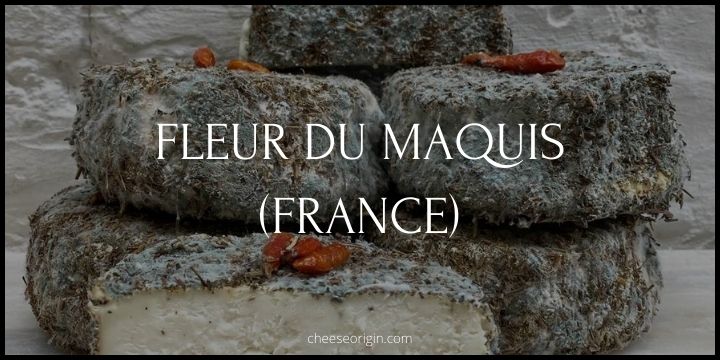What is Queso Fresco? A Delightful Journey through its Complex Flavors
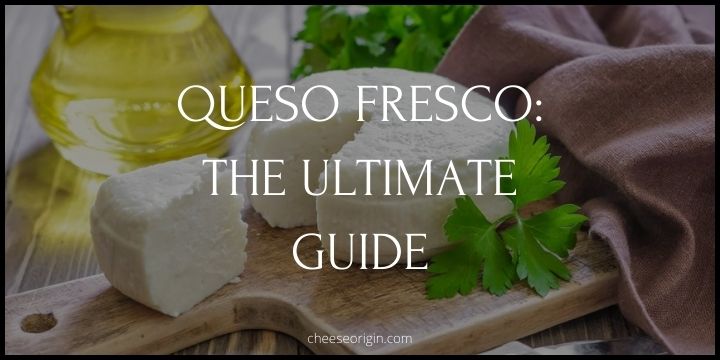
In the world of cheese, Queso Fresco holds a special place. This Mexican delight, with its soft texture and mild flavor, has captured the hearts of gourmands around the globe.
But have you ever wondered about the journey of this cheese, from the humble dairies in Mexico to your dinner table?
In this post, we will embark on a flavorful voyage, tracing the origins of Queso Fresco, exploring its unique production methods, and celebrating the diverse ways it enhances our meals.
Quick Facts about Queso Fresco
| Quick Facts | Details |
|---|---|
| Origin | Mexico |
| Type of milk | Cow or goat’s milk |
| Texture | Soft, grainy |
| Flavor | Mild, slightly acidic |
| Color | White |
| Aging time | No aging required |
| Cooking properties | High in protein, calcium, and vitamins A & D |
| Popular uses | Sprinkled on top of dishes, used in salads, served with fruit |
| Nutritional value | High in protein, calcium and vitamins A & D |
| Storage | Refrigerate, and consume within a week for the best flavor |
| Pairings | Pairs well with light wines, fruits, and spicy foods |
What is Queso Fresco?
Queso Fresco, which translates to “fresh cheese” in Spanish, is a traditional Mexican cheese. It’s known for its mild and slightly tangy flavor, coupled with a creamy yet crumbly texture.
This cheese is typically made from raw cow milk or a combination of goat and cow milk. Queso Fresco does not undergo an aging process, which contributes to its fresh and light taste. It’s often used as a topping for traditional Mexican dishes like enchiladas and tacos, but it can also be enjoyed on its own or paired with fruit.
Due to its unique properties, Queso Fresco doesn’t melt like other cheeses when heated. Instead, it softens while retaining its shape, which makes it a popular choice for grilling or baking. Despite its roots in Mexican cuisine, this versatile cheese has found its way into various culinary traditions around the world.
What does Queso Fresco taste like?
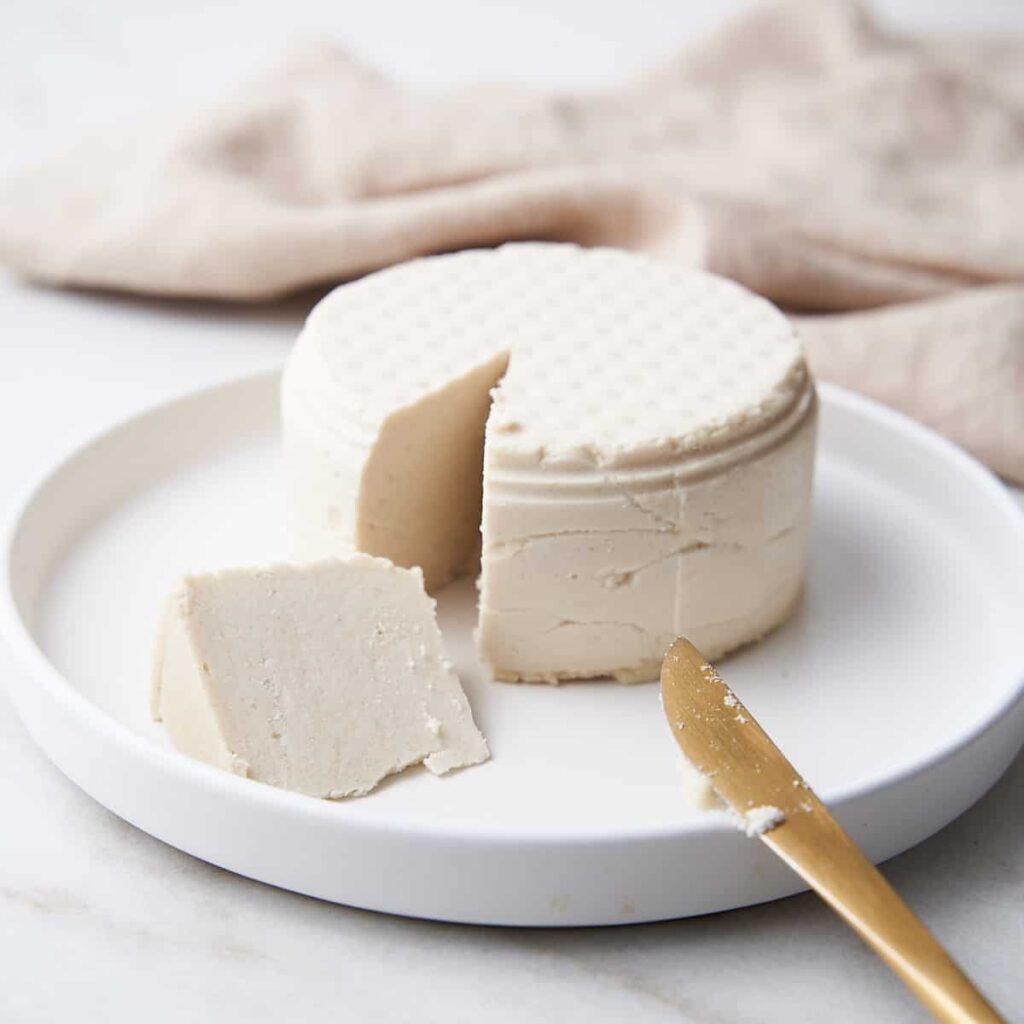
Queso Fresco is known for its mild, fresh and slightly tangy flavor. Its taste is often described as milky or buttery with a slight acidity, similar to a milder version of feta cheese.
The flavor profile is subtle, which makes it an excellent complement to a variety of dishes without overpowering other ingredients.
The texture is soft and crumbly, adding a pleasant contrast in salads or on top of hot dishes where it softens but does not completely melt. Its refreshing taste and versatile texture make Queso Fresco a delightful addition to any culinary experience.
Queso Fresco tasting notes
- Flavor Profile: Queso Fresco has a mild, slightly tangy flavor. It’s not overpowering, which makes it ideal for pairing with a wide range of foods.
- Milky: The cheese offers a fresh, milky taste that is reminiscent of fresh farm milk. This flavor is due to the use of fresh cow or goat’s milk in its production.
- Slight Acidity: There’s a subtle hint of acidity in Queso Fresco that adds to its unique taste. This slight tang gives it a refreshing edge.
- Texture: Queso Fresco is soft and crumbly in texture. It provides a delightful mouthfeel that enhances the overall tasting experience.
- Heat Resistance: Unlike many other cheeses, Queso Fresco doesn’t fully melt when heated. Instead, it softens while maintaining its shape. This property gives it a unique, slightly chewy texture when used in cooked dishes.
- Versatility: Due to its mild flavor and pleasing texture, Queso Fresco can be used in a variety of dishes. It pairs well with spicy foods, fruits, and light wines.
- Freshness: As the name suggests, Queso Fresco (which translates to “fresh cheese”) has a fresh, clean taste. It’s typically consumed within a week of production to maintain this freshness.
- Aroma: Queso Fresco has a light, almost neutral aroma. It doesn’t have the strong, pungent smell that some aged cheeses are known for.
Is Queso Fresco just Mozzarella?
No, Queso Fresco and Mozzarella are two distinct types of cheeses with different characteristics, although they might seem similar due to their soft texture and mild flavor.
| Criteria | Queso Fresco | Mozzarella |
|---|---|---|
| Origin | Mexico | Italy |
| Milk Source | Traditionally made from raw cow milk or a mixture of cow and goat milk. | Traditionally made from water buffalo’s milk, but often made from cow’s milk outside of Italy. |
| Texture | Soft and crumbly | Smooth and elastic |
| Flavor | Mild, slightly tangy | Delicate, milky |
| Melting Properties | Doesn’t melt completely, but softens when heated | Melts beautifully |
| Common Uses | Used in Mexican dishes like enchiladas, tacos, and salads | Frequently used in Italian dishes like pizza, lasagna, and caprese salad |
| Freshness | Consumed within a week of production | Can be consumed fresh or aged |
| Aroma | Light, almost neutral aroma | Mild, milky aroma |
Queso Fresco, as mentioned earlier, is a Mexican cheese made from raw cow milk or a mixture of goat and cow milk. It’s slightly tangy, crumbly, and doesn’t melt completely when heated.
On the other hand, Mozzarella is an Italian cheese traditionally made from water buffalo’s milk, though it’s often made from cow’s milk outside of Italy. It has a smooth, elastic texture and a delicate, milky flavor. Unlike Queso Fresco, Mozzarella melts beautifully, making it a popular choice for pizzas and baked dishes.
While both cheeses can be used in a variety of dishes due to their mild flavors, they offer different textures, melting properties, and culinary uses.
>> Click here to read our in-depth guide on Mozzarella
10 best substitutes for Queso Fresco
| Substitute | Explanation |
|---|---|
| Cotija Cheese | Cotija is a Mexican cheese that is dry, crumbly, and salty. Its flavor and texture make it a good substitute for Queso Fresco. However, it’s saltier than Queso Fresco, so use it sparingly. |
| Feta Cheese | Feta is a Greek cheese that has a crumbly texture and tangy flavor, somewhat similar to Queso Fresco. It can be a good substitute, especially in salads and Mediterranean dishes. |
| Ricotta Cheese | Ricotta has a similar creamy texture to Queso Fresco but it’s less crumbly. It’s a good substitute in recipes where the cheese is not the main flavor component. |
| Cottage Cheese | Although softer and creamier than Queso Fresco, cottage cheese can be used as a substitute in recipes where the cheese is mixed with other ingredients, like in dips or fillings. |
| Monterey Jack | Monterey Jack is a semi-hard American cheese with a mild flavor and good melting properties. It can be used as a substitute in cooked dishes. |
| Paneer | Paneer is an Indian cheese that doesn’t melt when heated. It’s firm and crumbly, making it a good substitute for Queso Fresco in cooked dishes. |
| Halloumi | Halloumi is a Cypriot cheese that doesn’t melt when heated. It has a slightly chewy texture and a salty flavor, making it a unique substitute in grilled or fried dishes. |
| Ricotta Salata | This is a pressed, salted and dried version of Ricotta. It is firm and crumbly with a salty flavor, making it a good substitute in salads or pasta dishes. |
| Farmer Cheese | Farmer cheese is a soft, white cheese with a slightly tangy flavor. It can be used as a substitute in recipes where a mild, creamy cheese is needed. |
| Tofu | Tofu is not a cheese, but its firm variety can mimic the texture of Queso Fresco. It’s a good vegan substitute, although it lacks the distinctive flavor of Queso Fresco. |
Is Feta the same as Queso Fresco?
No, Feta and Queso Fresco are not the same, although they might share some similarities.
Feta Cheese:
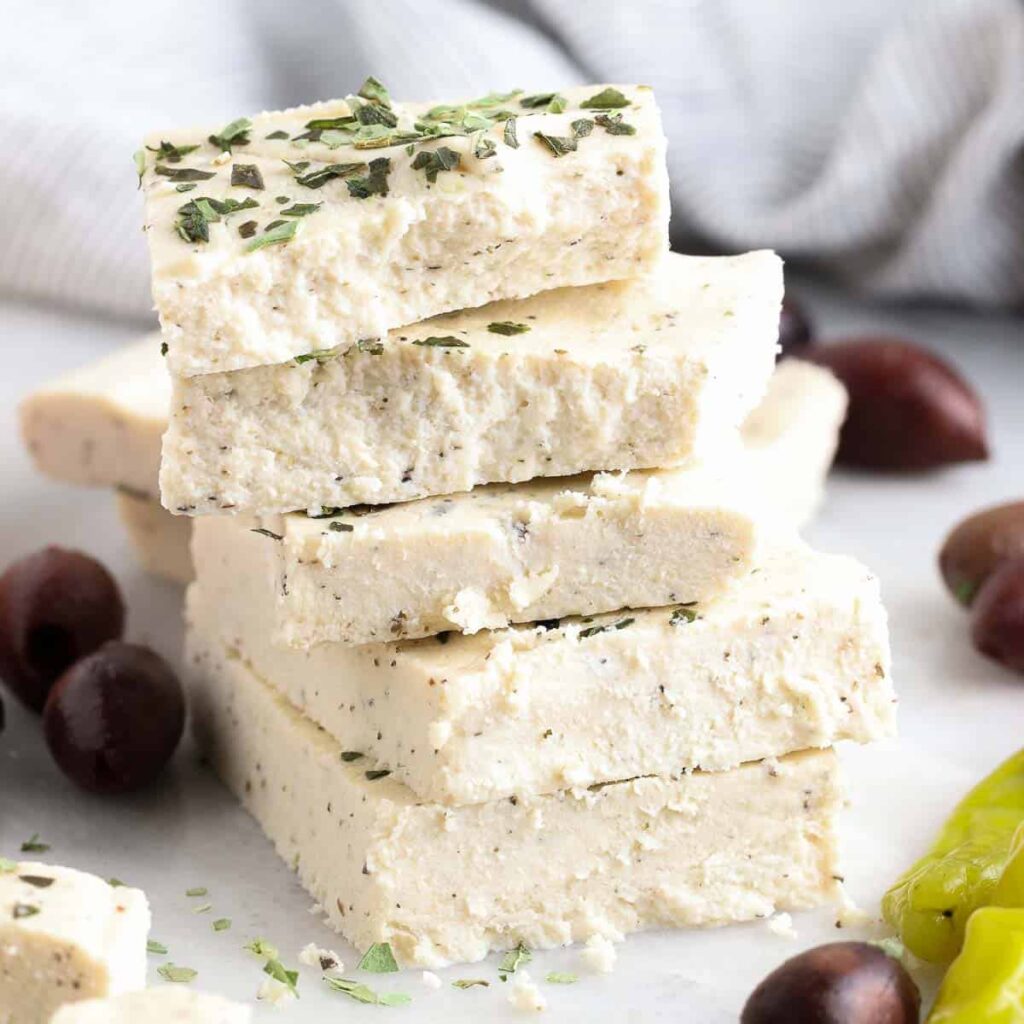
- Originates from Greece.
- Traditionally made from sheep’s milk or a blend of sheep and goat’s milk.
- Has a salty, tangy flavor.
- Crumbly texture that can be easily sliced or crumbled.
- It’s often used in salads, pastries, or as a table cheese.
Queso Fresco:

- Originates from Mexico.
- Usually made from raw cow milk or a combination of cow and goat milk.
- It’s mildly tangy and creamy.
- The texture is soft and crumbly, similar to Feta, but it doesn’t have the same saltiness.
- It’s commonly used in Mexican cuisine, like in enchiladas, tacos, or sprinkled on top of refried beans.
The truth is, they can sometimes be used interchangeably in recipes due to their similar textures, they offer different flavors and culinary uses.
>> Click here to read our in-depth guide on Feta
Queso Fresco vs. Cotija
| Criteria | Queso Fresco | Cotija |
|---|---|---|
| Origin | Mexico | Mexico |
| Milk Source | Traditionally made from raw cow milk or a mixture of cow and goat milk. | Traditionally made from cow’s milk. |
| Texture | Soft and crumbly | Hard and crumbly when aged, softer when fresh |
| Flavor | Mild, slightly tangy | Salty, strong flavor |
| Melting Properties | Doesn’t melt completely, but softens when heated | Doesn’t melt, retains its shape when heated |
| Common Uses | Used in Mexican dishes like enchiladas, tacos, and salads | Often grated on top of Mexican dishes like tostadas, tacos, and beans |
| Freshness | Consumed within a week of production | Can be consumed fresh or aged |
| Aroma | Light, almost neutral aroma | Strong, pungent aroma when aged |
Queso Fresco and Cotija, both hailing from the vibrant culinary landscape of Mexico, offer distinct flavors and textures that make them unique in their own right.
Queso Fresco, translating to “fresh cheese,” is a soft, mild, and slightly tangy cheese made typically from cow’s milk or a blend of cow and goat milk. It crumbles easily, yet holds its shape when heated, making it a versatile choice for a variety of dishes, from enchiladas to salads.
Cotija, on the other hand, is named after the town of Cotija in Mexico and is often referred to as the ‘Parmesan of Mexico.’ It’s a hard, crumbly cheese with a potent salty flavor, crafted traditionally from cow’s milk.
Unlike Queso Fresco, Cotija is aged, which gives it a dry texture and a robust, slightly spicy taste. It is often used sparingly as a topping to add a punch of flavor to dishes like tacos, spicy stews, and beans.
Despite their differences, both cheeses enrich Mexican cuisine with their unique characteristics and culinary potential.
>> Click here to read our in-depth guide on Cotija
Why is Queso Fresco so good?
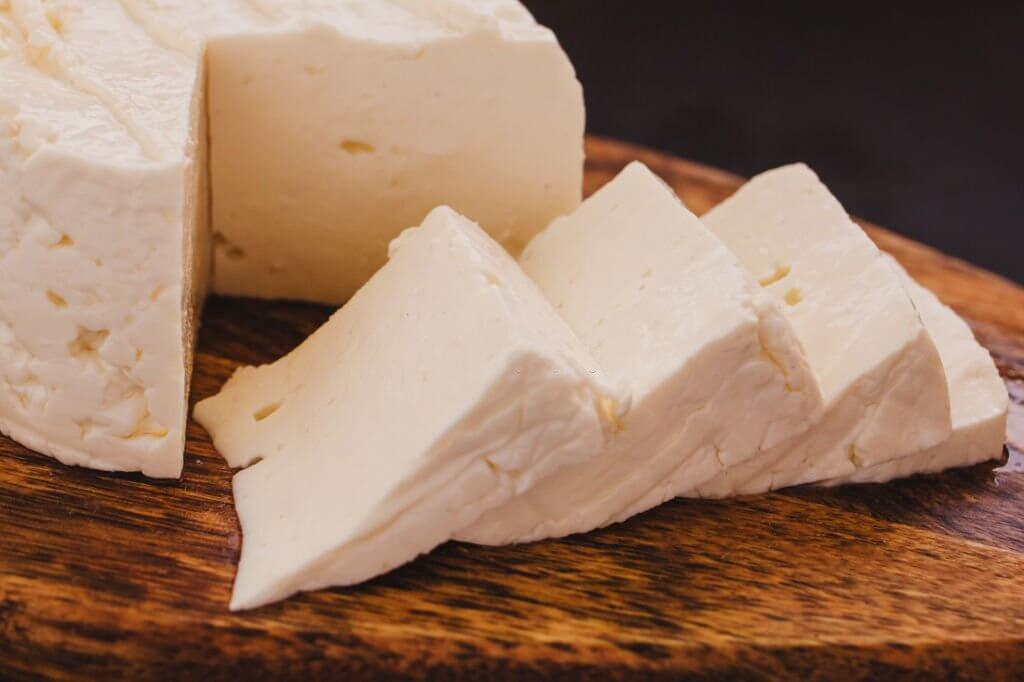
- Mild Flavor: Queso Fresco has a mild, slightly tangy flavor that pairs well with a variety of dishes. Its taste complements rather than overpowers other ingredients, making it a versatile choice in cooking.
- Texture: It is soft and crumbly, which adds a unique and pleasant mouthfeel to dishes. When heated, Queso Fresco retains its shape while becoming softer, adding an interesting textural element to the food.
- Freshness: Unlike many cheeses that are aged, Queso Fresco is typically consumed fresh, soon after it’s made. This gives it a light and fresh taste that is often described as refreshing.
- Versatility: Because of its mild flavor and interesting texture, Queso Fresco can be used in a wide range of dishes. It’s commonly used in Mexican cuisine, where it is crumbled over salads, tacos, and enchiladas, but it can also be used in many other types of dishes.
- Simple and Natural: Queso Fresco is traditionally made from raw cow milk or a mixture of cow and goat milk, without the addition of preservatives or artificial flavors. This simplicity and naturalness add to its appeal.
- Cultural Significance: Queso Fresco holds a significant place in Mexican cuisine. Its use in traditional Mexican dishes adds an authentic touch, enhancing the overall dining experience.
How to melt Queso Fresco?
Melting Queso Fresco can be a bit tricky as it’s a cheese that softens when heated, but doesn’t melt in the same way that other types of cheese do, like mozzarella or cheddar.
However, there are some methods you can use to achieve a melted texture with Queso Fresco:
Oven Method
- Preheat your oven to 350°F (175°C).
- Place the Queso Fresco in an oven-safe dish.
- Bake for about 10-15 minutes until the cheese is melted and bubbling.
Stovetop Method
- Place a saucepan over low heat.
- Add the grated Queso Fresco to the saucepan.
- Allow the cheese to cook for about ten minutes while stirring it frequently to prevent it from burning.
Microwave Method
- Shred the block of Queso Fresco and place it in a microwave-safe dish.
- Microwave it for 1-2 minutes, checking frequently to ensure it doesn’t burn.
Note: Queso Fresco does not melt into a smooth, flowing consistency like some other cheeses. Instead, it will become soft and creamy.
Is Queso Fresco a healthy cheese?
Queso Fresco is a healthy cheese option for the following reasons:
- Balanced Macronutrients: Queso Fresco offers a balance of all three macronutrients – proteins, fats, and carbohydrates. This translates to a reasonable range of calories, making it a suitable choice for those watching their caloric intake.
- Relatively Low Fat: Compared to many other cheeses, Queso Fresco is relatively low in fat. It contains around 21 grams of fat per 100g serving.
- Nutrient Dense: Cheese, including Queso Fresco, is a rich source of essential nutrients. It contains high amounts of vitamins A and B-12, along with zinc, phosphorus, and riboflavin. Additionally, Queso Fresco provides 23% of your daily recommended allowance of calcium and 22% of phosphorus.
However, there are a few things to bear in mind:
- Potential Pathogen Risk: Queso Fresco’s high moisture content makes it susceptible to pathogens. Therefore, it’s crucial to ensure it’s made from pasteurized milk and stored properly.
- Calorie Content: While it’s lower in fat than some other cheeses, Queso Fresco is still calorie-dense. A 122g serving of fresh Queso Fresco contains 365 calories.
Note: While Queso Fresco can be part of a healthy diet, like any food, it should be consumed in moderation.
Also read: Savor the Flavor: 20 Cheeses with the Least Lactose
Queso Fresco nutrition facts
| Nutrient | Amount per 1 oz (28g) Serving |
|---|---|
| Calories | 80-90 |
| Protein | 5.4g |
| Carbohydrates | 0.9g |
| Fat | 6.8-7.1g |
| Fiber | 0g |
| Sugar | 0.7g |
| Cholesterol | Varies |
| Calcium | 226.4mg (23% DV) |
| Phosphorus | 154mg (22% DV) |
What pairs well with Queso Fresco

Food that goes well with Queso Fresco
| Category | Foods That Pair Well With Queso Fresco |
|---|---|
| Proteins | Grilled chicken, beef, fish, shrimp |
| Vegetables | Avocado, tomatoes, bell peppers, corn |
| Fruits | Mango, papaya, pineapple |
| Breads | Tortillas, baguettes, pita bread |
| Grains | Quinoa, rice, couscous |
| Condiments | Salsa, guacamole, pico de gallo |
| Desserts | Fresh berries, honey, dark chocolate |
Beverage that goes well with Queso Fresco
| Category | Beverages That Pair Well With Queso Fresco |
|---|---|
| Wine | Sauvignon Blanc, Chardonnay, Pinot Grigio |
| Beer | Lager, Pale Ale, Wheat Beer |
| Spirits | Tequila, Mezcal |
| Non-Alcoholic | Lemonade, Iced Tea, Fruit Smoothies |
Also read: Best Wine and Cheese Pairings: The Ultimate Guide
How to Make the Perfect Homemade Queso Fresco
Queso Fresco is surprisingly easy to make at home and requires only a few simple ingredients. Here’s an in-depth guide to help you make the perfect homemade Queso Fresco.
Ingredients:
- 1 gallon of milk (cow or goat, or a mixture of both)
- 1/4 cup white vinegar
- 1-2 teaspoons of salt (to taste)
Equipment Needed:
- Large pot
- Cheese thermometer
- Cheese cloth or fine mesh strainer
- Slotted spoon
- Cheese mold or a small colander (optional)
Step-by-step Guide:
- Heat the Milk: Pour your milk into the large pot and heat it over medium heat until it reaches a temperature of about 185°F (85°C). Use your cheese thermometer to monitor the temperature. Stir occasionally to prevent the milk from scorching.
- Add the Vinegar: Once the milk reaches the desired temperature, remove the pot from the heat and stir in the vinegar. Let the mixture sit for about an hour. The acid in the vinegar will cause the milk to curdle, separating into curds and whey.
- Strain the Curds: Line a colander with a double layer of cheesecloth. Carefully pour the curdled milk into the colander to strain out the whey. What remains in the cheesecloth are the curds, which will become your cheese.
- Salt and Mold the Cheese: Sprinkle the curds with salt, mixing gently with your hands. Gather the corners of the cheesecloth and twist to form a bundle. If you have a cheese mold, you can place the bundle in it to shape your cheese. If not, you can simply press the bundle gently to squeeze out more whey and help the curds compact.
- Let it Set: Place your cheese (still in the cheesecloth) in the refrigerator and let it set for at least a few hours, or overnight for a firmer texture.
Tips and Tricks:
- Choosing Your Milk: While Queso Fresco can be made with any type of milk, using a higher-fat milk will yield a richer, creamier cheese. Avoid using ultra-pasteurized milk, as it may not curdle properly.
- Flavoring Your Cheese: For a different flavor profile, you can experiment with adding herbs or spices to your curds before you mold the cheese.
- Achieving the Right Texture: The longer you let your cheese set, the firmer it will be. For a softer, creamier cheese, try setting it for a shorter amount of time.
Storing and Serving:
- Store your Queso Fresco in the refrigerator, where it will keep for about two weeks.
- Queso Fresco is great crumbled over salads, tacos, or chili. It can also be used in baking or melted on top of a hot dish.
Making homemade Queso Fresco takes some patience, but the result is a fresh, flavorful cheese that’s versatile enough to be used in a variety of dishes. Enjoy!
What is the Difference Between Queso Fresco and Queso Blanco?
Queso Fresco and Queso Blanco are both Mexican cheeses, but they have different characteristics.
Queso Fresco:

- Queso Fresco is Spanish for “fresh cheese”. It’s a traditional Mexican cheese that is made from raw cow milk or a combination of cow and goat milk.
- The cheese is soft, crumbly, and mild in flavor. It’s typically used in Mexican and Southwestern cuisines. It’s often crumbled on top of dishes or used in cooking.
- When heated, Queso Fresco becomes creamy but maintains its shape rather than melting.
Queso Blanco:

- Queso Blanco is Spanish for “white cheese”. It’s a semi-soft cheese that’s often made from cow milk.
- Queso Blanco has a mild, creamy flavor. It’s often used in a similar manner to Queso Fresco, but it can also be cubed and fried because it holds its shape when heated.
- Unlike Queso Fresco, Queso Blanco does not melt at all when heated. Instead, it softens but retains its overall shape.
While both cheeses are fresh, white, and typically used in similar dishes, Queso Fresco tends to be softer and more crumbly than Queso Blanco, and each behaves differently when heated.
>> Click here to read our in-depth guide on Queso Blanco
The History and Origin of Queso Fresco
Queso Fresco, often translated as “fresh cheese”, likely originated in Spain but it’s commonly associated with Mexican cuisine. Spanish settlers started making the cheese in the early to mid-1800s and it quickly gained popularity in Mexico.
Queso Fresco is a mild, soft, and crumbly cheese that is traditionally made from raw cow milk or a combination of cow and goat milk. In Spanish, ‘Queso Blanco’ or ‘white cheese’ can refer to many different kinds of cheeses whose only common trait is their fresh and white characteristics, among which Queso Fresco is one.
The cheese is usually crumbled on top of various dishes such as enchiladas or tostadas, and it’s also used in Mexican tapas, called botanas. Its versatility and unique taste have contributed to its popularity, not just in Mexico, but around the world.
Frequently Asked Questions
1. Is Queso Fresco a melting cheese?
Queso Fresco is considered a soft cheese, but it doesn’t melt like other cheeses do. When heated, it becomes creamy and soft, but it maintains its shape rather than oozing or spreading. This makes it an excellent choice for grilling or frying, as it can withstand heat without losing its structure. That said, it’s often crumbled on top of dishes or used in recipes where a creamy, mild cheese is desired.
2. How to pronounce Queso Fresco?
“Queso Fresco” is pronounced as “Keh-so Fres-ko”. Here’s a breakdown:
- Queso: “Keh-so”
- Fresco: “Fres-ko”
The ‘u’ in “Queso” is silent and the ‘e’ is pronounced like the ‘e’ in ‘best’. The ‘s’ sounds like the ‘s’ in ‘see’.
In “Fresco”, the ‘e’ is pronounced like the ‘e’ in ‘best’ and the ‘o’ is pronounced like the ‘o’ in ‘pot’.
Please note that pronunciation can vary slightly based on regional accents and dialects.
3. Can I freeze Queso Fresco?
Fresh cheeses like Queso Fresco are typically best when consumed fresh, as they have a high moisture content. When frozen and then thawed, the cheese might become more crumbly and less creamy.
If you still choose to freeze it, make sure to wrap it well in plastic wrap or place it in a freezer bag to prevent freezer burn. It can be frozen for up to two months.
When you’re ready to use it, let it thaw slowly in the refrigerator. Keep in mind that the thawed cheese is best used in cooked dishes, such as baked dishes or soups, where the change in texture won’t be as noticeable.
Also read:
- Menonita Cheese: A Staple in Northern Mexican Cuisine
- All About Roquefort: An Insider’s Guide to the King of Blue Cheese
- Asiago Cheese: An In-depth Exploration of Nutrition and Taste
- The Ultimate Guide to Muenster Cheese: Savor the Flavor
- Ricotta Guide: All You Need to Know About This Versatile Cheese
- Emmental: A Comprehensive Guide to Switzerland’s Cheese Haven
- The Ultimate Guide to Kasseri: A Taste of Tradition


